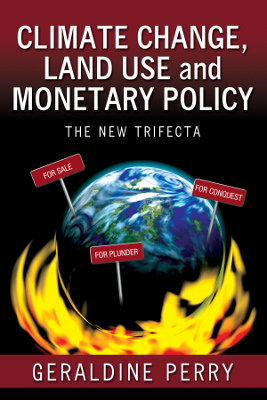
OR. . .
Visit a book store near you!!
ABOUT THE BOOK
The book argues that the most important element in helping us understand just where it is that we have gone wrong, and how best to go about fixing it, is to first examine the oft-forgotten connection between land use and monetary policy. It is land use, not fossil fuel burning per se, which drives that portion of climate change attributable to human activity, and it is, in turn, monetary policy that has driven land use since the days of ancient Mesopotamia.
We must come to terms with the fact that our current, single-minded, misguided fixation on CO2 reduction will only keep us on the present trajectory of planetary destruction - even as it makes boatloads of money for all manner of "stock-jobbers" and industry insiders who wittingly or otherwise have managed to turn CO2 into a tradable commodity. All of this is in large part due to our own oversimplification and misunderstanding of the scientific and monetary questions. Yet there are solutions, if we only choose to look.
The first portion of the book focuses on the relationship between climate change and land use, particularly in the agriculture and energy arenas. Here the reader is introduced to a unique form of agriculture, often referred to as regenerative or perennial agriculture, through which it is possible to dramatically reduce CO2 and associated soil and water pollution while at the same time help to rebuild our dangerously depleted agricultural soils. Surprisingly, this form of agriculture can also dramatically reduce the amount of land devoted to food production and at the same time provide us with the astonishing ability to feed the world's billions 20 or 30 times over with high quality, nutrient dense foods. In this first portion of the book the reader also learns about “land friendly” energy alternatives that bear little resemblance to today's land-hungry “clean” or “green” energy alternatives.
The last portion of the book explores the relationship between land use and monetary policy which the modern world inherited from ancient Mesopotamia. It is the extractive nature of this monetary system which encourages the high risk gambling characteristic of trifecta bets that destroys the land and deprives the people of the fruits of their labor. Land use is the problem and “land friendly” monetary reform is the solution.